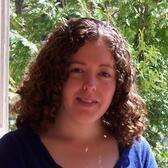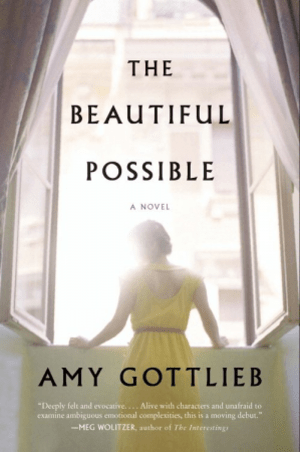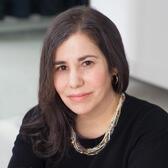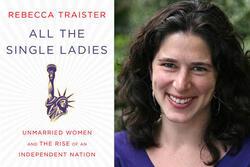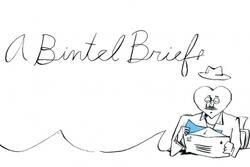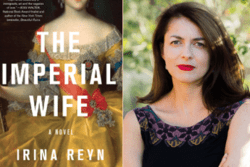The Beautiful Possible: An Interview with Amy Gottlieb
In The Beautiful Possible, Amy Gottlieb traces the lives of rabbis and spiritual seekers who are connected in an intricate web of love and secrets, following them from the ashrams of India to the suburbs of 1950s America. JWA sat down with Gottlieb to discuss how she came to write her first novel, the influence of poetry, and how characters can surprise you.
Sol, Walter, and Rosalie aren’t just branches of a love triangle, they’re complex characters with lives and desires that don’t always intersect. What was the inspiration for each of them?
The novel began with Walter, a secular, German-Jewish historian who had somehow escaped the Holocaust and wound up in Berkeley, and I needed to find out how he got there. Many years ago, I had read accounts of Jews who fled Nazi Germany and wound up in India, and as I researched, I discovered the story of Alex Aronson, who found sanctuary in Tagore’s ashram. When I found that, I was stunned. I had already incorporated Tagore’s poetry in my novel and this deepened the connection, inviting me to find the shape of Walter’s journey.
As I drafted, I stumbled upon the characters of Sol and Rosalie, who are caught in their own struggle as a rabbinic couple in a suburban synagogue. The character of Rosalie was influenced by the women of my childhood. Almost every night, my mother and her friends shared intimate secrets around our kitchen table. Remarkably, they invited me to listen in, which was an incredible apprenticeship for a young writer. These women were filled with contradictions—they were wise yet skeptical, seductive yet sad, and they had outrageous senses of humor. In many ways, they were struggling with the same issues as Rosalie: what are the boundaries between motherhood and unfulfilled longings, and what are the boundaries of religious belief?
Sol was my most elusive character, but I recognized his situation. For fourteen years I worked as director of publications for the Rabbinical Assembly [the professional organization of Conservative rabbis, housed in the Jewish Theological Seminary]. My work there offered me an insider’s view of the complexity of rabbis’ lives. I was also fascinated by the magic in that building; older rabbis in the hallways referred to each other as “gentlemen and scholars” and talked about Abraham Joshua Heschel as their beloved teacher and mentor.
Rosalie spends a lot of the book grappling with the limited options available to women coming of age in the 1940s and 1950s, and at one point she fantasizes about becoming a rabbi. Do you see her as someone who would be a rabbi if she were born in another time?
Oh, definitely! Many learned Jewish women of her time married rabbis instead of pursing that path themselves; there was no other choice. In many ways, the rabbi’s wife was the one better equipped to deal with the community and deliver pastoral care, which Rosalie certainly does, and she has the fluidity that would have made her an amazing rabbi. A generation later, her daughter Maya becomes a rabbi, but a new kind of rabbi: she wants to be a rabbi without borders, free of a pulpit and a congregation. She becomes a novelist-rabbi whose sacred text is the story she inherited and has to uncover.
I love the idea of her family story as sacred text. In writing this novel, did you see it more as a love story or a family saga?
I think they both go together. For Maya, it’s a love story, it’s a family story, and it’s a story about how we make meaning out of fragments, mysteries, and secrets. She is challenged to embrace the enigma of her parents’ story … which is the work of a novelist.
Are you someone who writes from beginning to end, or did you move backwards and forwards in the story as you were writing it?
I didn’t write the book sequentially; I approached it thematically and went through many drafts to find the voices of my characters, asking questions to investigate the story’s mysteries. The first scene I wrote was the opening scene with Walter and Sonia, and then a scene that shows up very late in the book where Walter is standing on his head in a yoga pose in his studio. It took me many years to discover all the storylines in between. As I inched along, I reached a point where I had to start the book all over again, and then again another time. Sometimes I felt as if I were sculpting the story, uncovering the emotional connections that drove the narrative.
It sounds like the story pulled you in new directions as it took shape. Was all of that exploration internal, or were there outside sources that inspired you, too?
I was surprised and thrilled by the way texts spoke to other texts. For example, I had already had a Tagore quote in the novel, and I loved his poetry, but the more I explored his poetry, the more I found motifs that echoed Heschel and the Zohar. The texts became ways for Sol, Rosalie, and Walter to connect across different traditions as they struggle with faith and doubt.
You started writing poetry around the same time you began working on The Beautiful Possible. How did that influence your writing style?
As a reader, I’ve always been partial to the music and cadence of sentences, and poetry deepens that connection. It challenges me to treat my sentences with the same care as I treat a poetic line, which I think is a good exercise for anyone who writes prose. Poetry demands a deep reverence for language, but it also invites a sense of play and lets us revel in the possibility of what language can do.
Amy's fiction and poetry have been published in Other Voices, Lilith, Puerto del Sol, Zeek, Storyscape, The Bloomsbury Anthology of Contemporary Jewish Poetry, and elsewhere. Amy lives with her family on the edge of the Hudson River in New York City. The Beautiful Possible is her first novel and JWA’s April 2017 book club pick.
Read more about Amy Gottlieb here!

